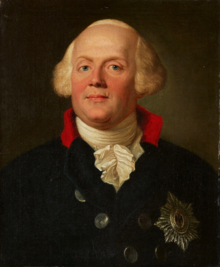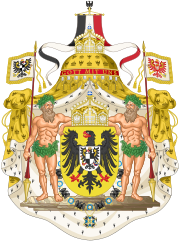| Frederick William II | |
|---|---|
 Portrait by Anton Graff | |
| King of Prussia Elector of Brandenburg | |
| Reign | 17 August 1786 – 16 November 1797 |
| Predecessor | Frederick II |
| Successor | Frederick William III |
| Born | 25 September 1744 Stadtschloss, Berlin, Kingdom of Prussia |
| Died | 16 November 1797 (aged 53) Marmorpalais, Potsdam, Kingdom of Prussia |
| Burial | |
| Spouses | |
| Issue |
|
| House | Hohenzollern |
| Father | Prince Augustus William of Prussia |
| Mother | Duchess Luise of Brunswick-Wolfenbüttel |
| Religion | Calvinist |
| Signature |  |
| Prussian Royalty |
| House of Hohenzollern |
|---|
 |
| Frederick William II |
Frederick William II (German: Friedrich Wilhelm II.; 25 September 1744 – 16 November 1797) was King of Prussia from 1786 until his death in 1797. He was in personal union with the prince-elector of Brandenburg and (via the Orange-Nassau inheritance of his grandfather) sovereign prince of the Canton of Neuchâtel. As a defensive reaction to the French Revolution, Frederick William II ended the German Dualism between Prussia and Austria. Domestically, he turned away from the enlightened style of government of his predecessor and introduced a tightened system of censorship and religious control. The king was an important patron of the arts especially in the field of music. As a skilled cellist he enjoyed the dedication of various cello-centric compositions by composers Mozart, Haydn, Boccherini, and Beethoven.[1] He was also responsible for some of the most notable architecture in Prussia, including the Brandenburg Gate in Berlin,[2] the Marble Palace, and Orangery in the New Garden, Potsdam.
- ^ Meier, Brigitte (2007). Friedrich Wilhelm II. König von Preussen: Ein Leben zwischen Rokoko und Revolution (in German). Friedrich Pustet. p. 206. ISBN 978-3-7917-2083-8.
- ^ "Friedens- statt Triumph-Symbol: Das Brandenburger Tor und sein Geheimnis". Der Tagesspiegel Online (in German). ISSN 1865-2263. Retrieved 19 January 2023.